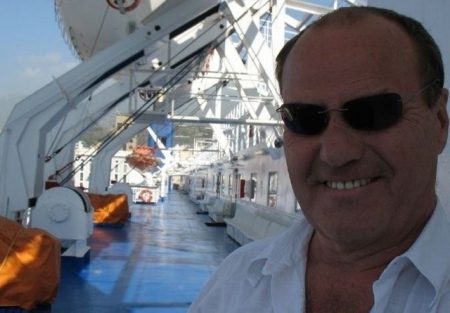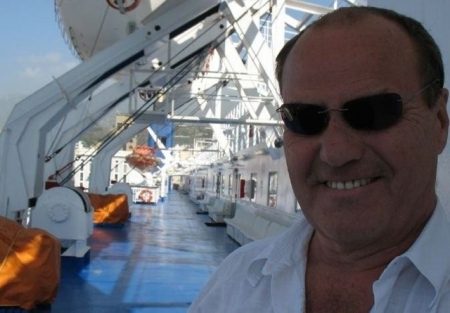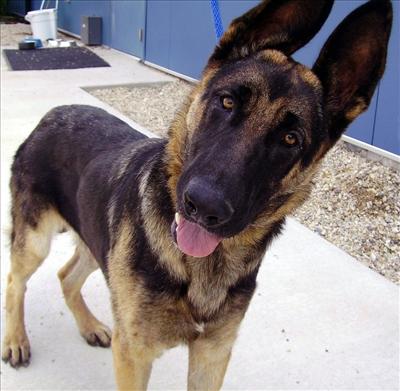

The Littlest Hobo hits the road again
Maybe tomorrow, he’ll want to settle down
Until tomorrow, he’ll just keep moving on…
— lyrics from The Littlest Hobo theme song
Ask any Canadian older than 30 about The Littlest Hobo television series and you will get an instant reaction. Memories will flow for the wonder dog who played the starring role. His intelligence and bravery will be recalled with wonder and affection.
The wildly popular family show — one of the first to cast an animal in its lead part — featured a German shepherd character who travelled from place to place helping people in trouble. He was the orphan version of Lassie.
For more than a decade, I’ve had the lyrics from the theme song Maybe Tomorrow pinned to my corkboard. Littlest Hobo validates the animal heroics I’ve witnessed. You need only mention that title to a group of animal rescuers and you’ll get an impromptu, rousing rendition of the song made famous by the show.
So you can imagine my thrill at meeting the man who directed Hobo’s action on set. From 1979 to 1983, Allan Eastman directed 44 episodes in the series. The former Winnipegger’s laudable directing career includes gigs on shows like Star Trek: Voyager, Deep Space 9, and Outer Limits. He’s worked with iconic talents such as Christopher Plummer, Hugh Grant and Kiefer Sutherland.
Over dinner in Vancouver last week, he told me the behind-the-scenes story of The Littlest Hobo’s antics. It turns out that the carousing production crew wasn’t what you would expect for a show aimed at families with small children.
"We were young up-and-comers. Never has wholesome family entertainment been done by such a group of degenerates," Eastman joked. "It was sex, dogs and rock and roll."
But that wasn’t the only reason I was fascinated.
For the director, life has imitated art. Eastman has turned into something of a Littlest Hobo himself. The 60-year-old recently realized his lifelong dream to travel full time. He’s left the comfort of his villa in Croatia and his home in Toronto to visit 110 countries, looping around the world three times. His odyssey spawned a book called Tickets, Money, Passport…Around the World and Then Some. It documents what happens when someone decides to trade the structure of home for a life on the road, devoting years towards adventure and meeting new people.
Just like Hobo did.
Hobo was always a lone wolf. At the end of each episode, the people he’d helped tried to adopt him, but Hobo had his own plans. He’d take to the open road, nosing out his next adventure.
In reality, there were several Hobos who played the part billed as "London" in the star credits. Dogs came and went on the set according to age and ability. A pack of five dogs nearly identical in appearance shared the spotlight. But like a mother and her twins, the cast and crew could easily discern which dog was who, Eastman said.
There was one London, but there was also Toro and Lance, and more than one Bo and Hobo. They had their own trailer, and were kept by Chuck Eisenmann, who was their breeder, guardian and trainer.
"There would always be a star dog who would get most of the scenes," Eastman said. "He would be experienced, about eight years old. There was an older patriarch who kept the others in line. And the other three young dogs would do all the running and jumping, all the fast-action shots."
Eisenmann taught the dogs to understand English at the level of an eight-year-old child. "It was amazing to watch. You kind of wish you could give commands to [human] actors the same way we did with the dogs."
Hobo was a magical creature to viewers who tuned in regularly to see what destination and dilemma awaited the dog next — the circus, the docks, the air force. Parents enjoyed the storylines. And kids had mad love for the dogs.
"We’d have a gallery of the public watching us shoot, and the kids just went bananas. You didn’t even really have to do anything for the kids, because they just went nuts for the dogs."
Tapings were mostly done in rural areas surrounding Toronto, but the sheer variety of the storylines fostered a diverse learning ground that created career magic, too. "Every week, we went into a whole new situation. I learned such a huge bag of tricks on that show.
"It was one of the great learning experiences of my career."
For the moment, Eastman has traded his director’s bag of tricks for his travel bags.
Maybe tomorrow, he’ll want to settle down.
Until tomorrow, he’ll just keep moving on.

This German shepherd doesn’t look exactly like the ones who starred in Littlest Hobo, but you get the idea. Photo courtesy of the Louisiana SPCA.
Join the newsletter and never miss out on dog content again!
"*" indicates required fields
By clicking the arrow, you agree to our web Terms of Use and Privacy & Cookie Policy. Easy unsubscribe links are provided in every email.